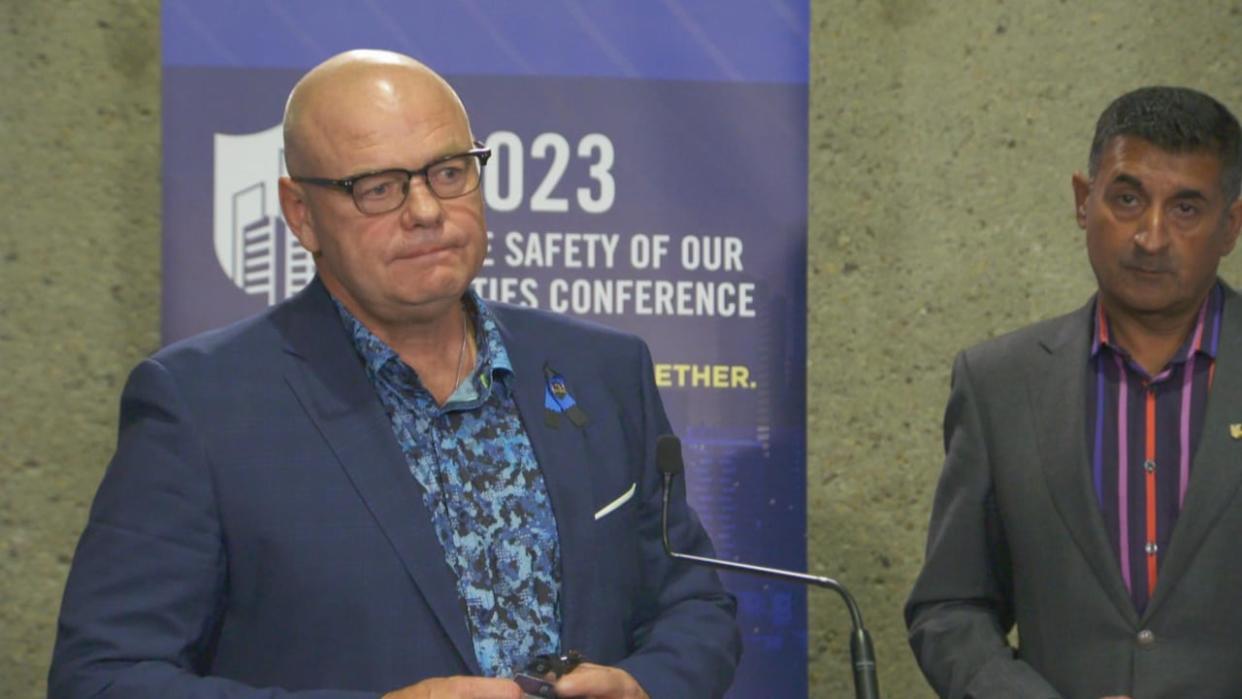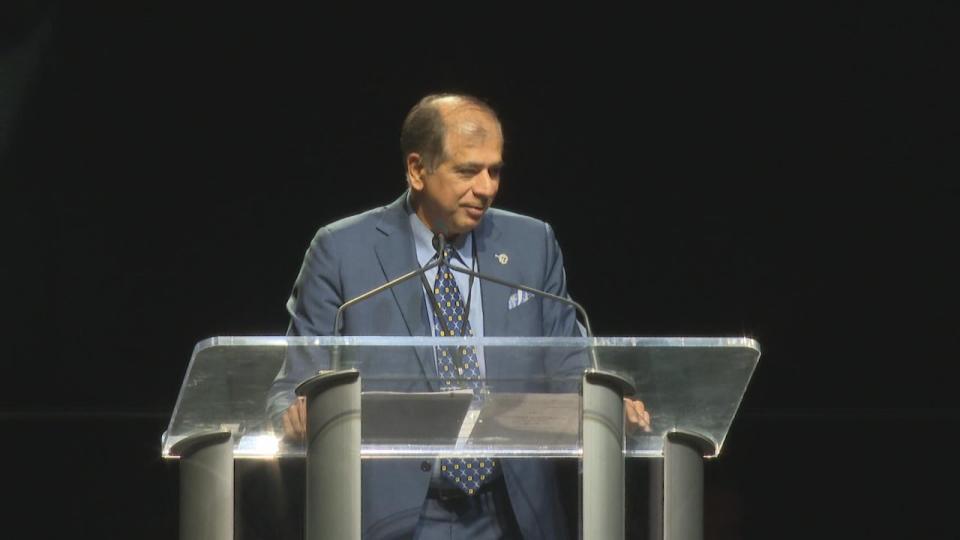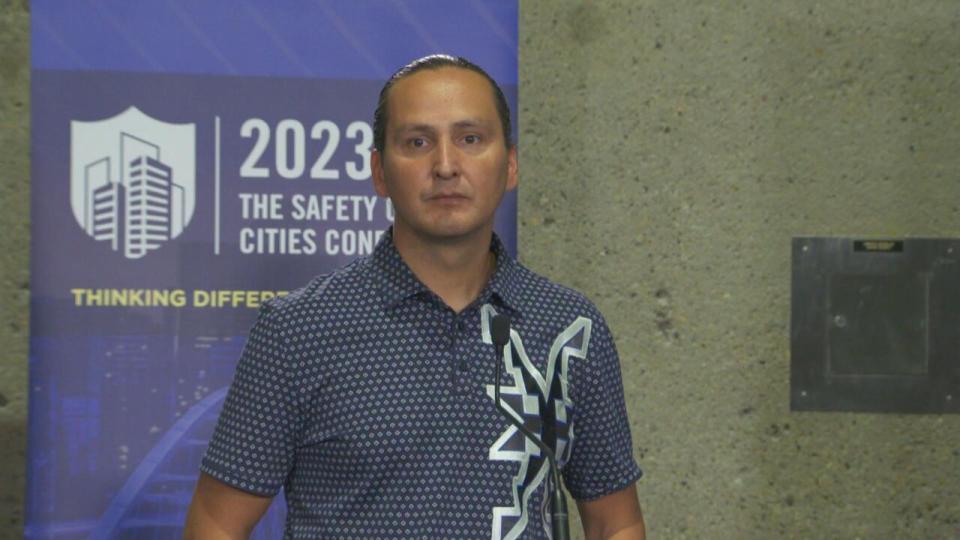Edmonton conference looks to data to determine how to tackle crime

Data became a focal point on the first day of the inaugural Safety of Our Cities conference at the Edmonton Convention Centre Monday.
Law enforcement and data analysts across North America are in Edmonton and spoke about the importance of sharing data to analyze ethically.
"From frontline organizations and governments to health and justice, we all have a role to play," said Anil Arora, chief statistician of Statistics Canada.
"To make decisions based on evidence, we need compelling data."

Anil Arora, chief statistician of Statistics Canada, spoke about the importance of ethical data analysis during the inaugural convention in Edmonton. (Travis McEwan/CBC)
Arora, who is from Edmonton, analyzed findings relating to the city's growing demographics, urban densification and sprawl.
He also looked at how the federal agency found Edmonton has experienced the highest violent crime rate it has ever seen.
"Rising crime isn't, of course, exclusive to my hometown here, nationally, Canada has seen the highest violent Crime Severity Index since 2007," Arora said.
Between 2021 and 2022, the Crime Severity Index rose five per cent and was driven by increasing rates of robbery, extortion, homicide and sexual assaults, according to previous data from Statistics Canada.
Data presented by Arora found socioeconomic factors are linked to neighbourhoods struggling with crime.
Factors include the lack of opportunity to pursue education beyond high school and or a lack of home ownership, he said.
"I'm not saying that low-income households are the cause of crime, rather, low-income households are more likely to live in neighbourhoods that had higher crime rates," Arora said.
"People with more resources can choose to live in more safe neighbourhoods."
Ethics of data collection
Edmonton Police Service Chief Dale McFee spoke to the media at the conference about how police forces are working to integrate data to better inform decision-making through the forces' academic council.
"I'm all for sharing data ... if we can make this better. Absolutely. And I'd say that most police chiefs have migrated to that point," McFee said.
During his presentation, Arora said it is essential to consult with communities to ensure privacy is respected and data is collected ethically.
"We can, in some sense, push technology and push the data. But we can only work at the pace of public trust."
EPS Deputy Chief Warren Driechel said during a panel discussion that it was significant to have transparent communication with the public on how collected data will be used as it was a moment of learning when it was found that the members of the force conducted unapproved use of Clearview AI facial recognition technology.
Law enforcement from across North America
Edmonton is playing host to police chiefs across North America, such as Peel Region in Ontario, and U.S. cities like San Francisco and Albuquerque, New Mexico.
Peel Region, consisting of Brampton and Mississauga, will host the next conference.
Peel Regional Police Chief Nishan Duraiappah said data allows police forces to examine how effective their approach is when dealing with vulnerable communities.
Duraiappah said when consideration was given to having a trauma-informed approach, it resulted in a 40 per cent drop in use of force incidents involving people from all ethnicities.
While Peel Regional Police used less force on Black people last year compared to 2020, the police force still did so 3.2 times more than Black people's share of the population, according to data released in 2022.
"What I hope is that I'll learn something from what Edmonton, Vancouver and Winnipeg, the cities here facing the same issues are doing, and we can take that back home and vice versa," said William Scott, chief of the San Francisco Police Department.
"We do swap ideas quite frequently, and that's why we're here from the other side of North America."

Cadmus Delorme, the former chief of Cowessess First Nation, said it is essential to look to Indigenous cultures as Western law enforcement and policymakers impact how much trust communities have in institutions in power regarding truth and reconciliation. (David Bajer/CBC)
Cadmus Delorme is the former chief of Cowessess First Nation, located about 140 kilometres east of Regina.
He said it is essential to look to Indigenous cultures as Western law enforcement and policymakers impact how much trust communities have in institutions in power regarding truth and reconciliation.
"You inherited this moment, Indigenous people, we don't want pity, we don't want anybody to feel sorry for us," Delorme said.
"But just understand we have our own solutions. We have our own models of healing."
The conference runs until Wednesday and will cover topics like transit safety and organized crime.


